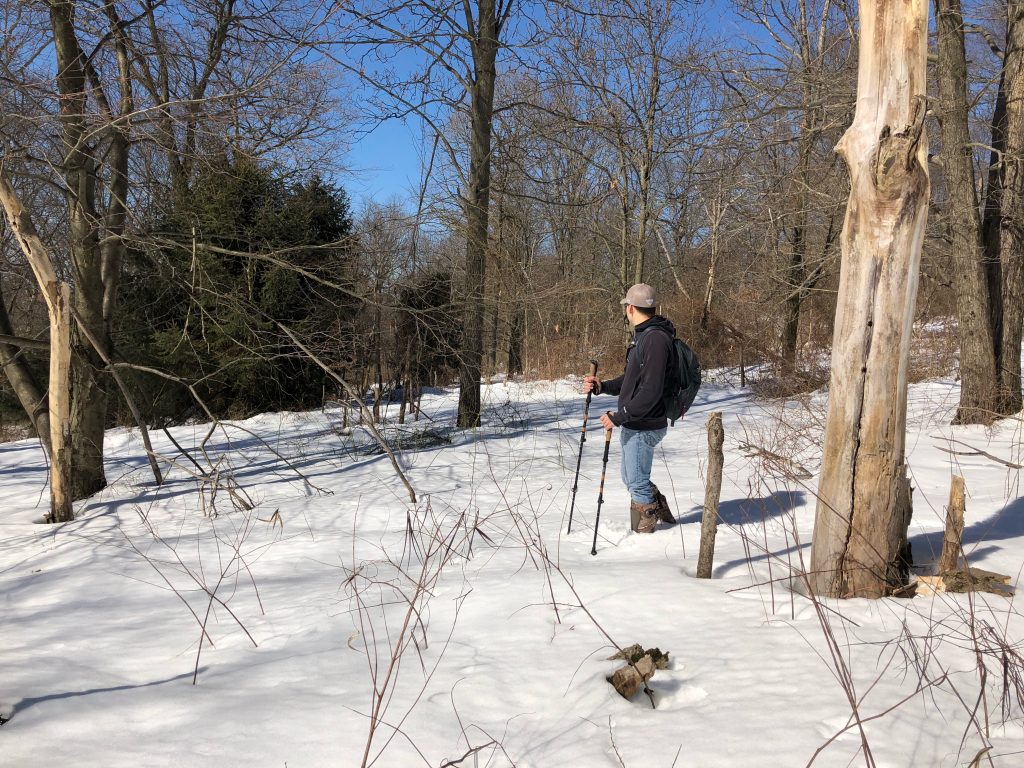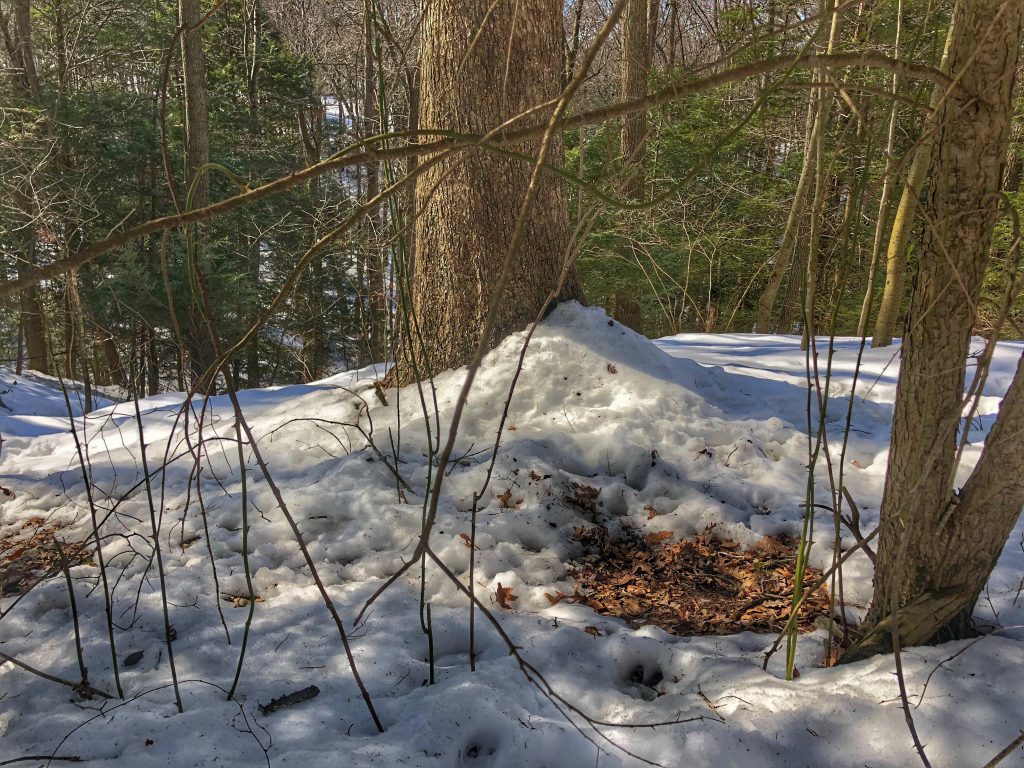Nothing could wipe away our enthusiasm, not even the waist-deep snow my friend and I trudged through on our way up the mountain. We were actively treating a bad case of cabin fever. Given the poor conditions, getting out almost seemed futile and probably was as far a shed hunting is concerned. But that didn’t stop us from tackling a 3-mile scout that day.
It’s the same thing every year: as soon as the season ends, I start itching to get out in the woods. There’s so much to learn before next season, and it feels like there’s never enough time to get to everything. Snow won’t stop me from scouting, nor should it. Plus, there are some advantages to a covered landscape. Here’s a post-season scouting podcast with Don Higgins to scratch your scouting itch.
Types of Snow Cover
There are 3:
- Dusting: Best served to see recent activity. Other than a trail camera that sends pictures right to your mobile device, a dusting that just fell overnight will reveal the closest thing to real-time movement possible.
- Partial (i.e., 2-6 inches): My personal favorite for scouting and shed hunting. Deer sign is still easy to see. Comparing active sign and old sign will reveal intel that can be helpful in-season.
- Heavy: Heavy snow cover is not often forgiving for a productive scouting mission. However, you can still see deer travel patterns in heavy snow. And when time is limited and scouting all the spots you’d like to in a year is a challenge, you’ve got to go when you’ve got to go!

Scouting in Snow Cover
Relating active sign in snow cover to actual in-season sign is controversial. Some think that a whitetail’s movement is entirely different without snow. Honestly, you’ll never know if that’s true in your area unless you do the work yourself.
The advantage that snow provides is the obvious sign left behind. Beds, tracks, trails, scat, urine—all sign and the deer activity it represents is more visible in the snow. That’s good news for you because the more detailed the sign, the more understanding you’ll obtain.
Bedding
I’ve found bedding areas that are used throughout different seasons no matter what the condition. There is a variance in frequency of use occasionally, but the terrain is the most significant determinant. Terrain provides a barricade of safety. To force a buck from that sense of security would take a significant negative encounter.

Looking closely at a bed, you should be able to determine whether it was used by a buck or a doe, especially if you find evidence of urine in the bed. A buck’s bed will be more prominent, and its urine stain will be towards the center of the bed, while a doe’s will be at the end.
Without snow, precise terrain or wind-based bedding is easy to miss. With snow, it’s almost impossible to miss if you’re walking by. Knowledge like that will help you understand why a deer beds a certain way. It will also give you clues to where you might be able to pick up a few freshly shed antlers when the time is right.
Tracks
Use caution with tracks. Fresh powdery snow around a track means that it’s probably fresh. But if the snow has melted even a little, small tracks will appear unusually large.
If you’ve ever wondered about a particular buck’s track, there’s no better time to follow a set. Chasing tracks will show you many secrets that otherwise would have remained unknown. Learning about the size of a deer, whether it’s a buck or a doe, or whether it was running, walking, or feeding are just some of the signs you’ll begin to understand. Snow is very likely to reveal deer behavior that you may have gotten wrong. A buck you think will travel to point A may be traveling to point B. When you see the writing in the snow, you’ll be ready for him next time.
Disadvantages of Snow Scouting
Hiking through snow is not all that fun when knee-deep or deeper. Wet feet and a slow pace make it challenging to cover miles of terrain. Hiking poles are a must, gaiters are helpful, and it’s not a bad idea to pack an extra pair of socks. If scouting in the snow is a regular occurrence for you, snowshoes are also an invaluable piece of equipment.
A disadvantage of scouting in the snow is the unnecessary pressure on deer. Pressure should matter to you if you’re scouting locations that freeze hard or have deep snow cover for long periods. Burning energy to escape people and predators produces stress that can be detrimental to the herd’s health.
Pressure also can cause deer to relocate. If you are hoping to find some shed antlers in an area you hunt, it’s probably better to wait until the beginning of March. Planning to scout this time of year will keep deer comfortable, and there will be a better chance of them dropping their antlers where you know you can find them. Snow also makes it challenging to find sheds, especially if the cover is deep enough to keep them hidden.
Conclusion
Snow scouting isn’t for everyone. My top consideration for deciding to go or not to go relies heavily on how many places I have to scout during the immediate postseason and springtime. If you have more locations to explore than you have time for, adding more time by snow scouting could be a good option. Plus, there’s just something awesome about the experience of following a set of tracks through a snow-covered landscape.